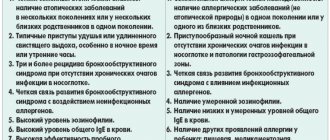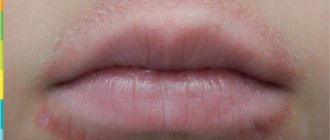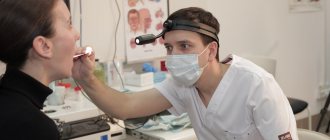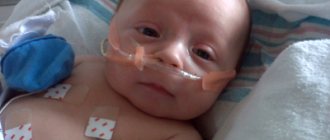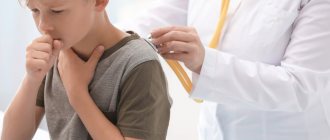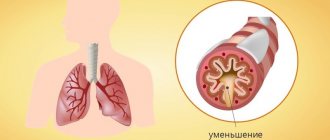Composition and release form
Lozenges - 1 tablet:
- active substances: antibodies to bradykinin, affinity purified - 0.006 g; affinity purified antibodies to histamine - 0.006 g; affinity purified antibodies to morphine - 0.006 g;
- excipients: isomalt - 0.506 g, MCC - 0.0275 g; magnesium stearate - 0.0055 g; anhydrous citric acid - 0.005225 g; colloidal silicon dioxide - 0.00275 g; sodium cyclamate - 0.00275 g; sodium saccharin - 0.000275 g.
Oral solution - 100 ml:
- active substance: affinity purified antibodies to bradykinin - 0.12 g; affinity purified antibodies to histamine - 0.12 g; affinity purified antibodies to morphine - 0.12 g;
- excipients: maltitol - 6 g; glycerol - 3 g; potassium sorbate - 0.165 g; anhydrous citric acid - 0.02 g; purified water - up to 100 ml.
Lozenges. In a blister pack made of PVC film and aluminum foil, 10 pcs. 1, 2 or 5 blister packs in a cardboard pack.
Oral solution. 100 ml in bottles made of OS brand glass or painted glass, sealed with tamper evident caps, with a PE dropper. Each bottle is placed in a cardboard pack.
Diagnosis of cough
It is often impossible to independently determine the cause of cough. Only a doctor can make a diagnosis, so if the cough is prolonged or causes severe discomfort, you should consult a physician. If necessary, you will be referred to a pulmonologist or other specialist and prescribed the necessary tests and examinations:
- Sputum analysis
- Serological study
- Rhinoscopy
- Pharyngoscopy
- Laryngoscopy
- Bronchoscopy
- X-ray of the chest organs, paranasal sinuses, etc.
- Computed tomography
pharmachologic effect
Antitussive.
Pharmacokinetics
The sensitivity of modern physicochemical methods of analysis (gas-liquid chromatography, high-performance liquid chromatography, gas chromatography-mass spectrometry) does not allow assessing the content of ultra-low doses of antibodies in biological fluids, organs and tissues, which makes it technically impossible to study the pharmacokinetics of the drug Rengalin.
Pharmacodynamics
It has been experimentally shown that the components of the drug modify the activity of the ligand-receptor interaction of endogenous regulators with the corresponding receptors: antibodies to morphine - with opiate receptors; antibodies to histamine - with H1-histamine receptors; antibodies to bradykinin - with B1 bradykinin receptors; in this case, the combined use of the components leads to an increase in the antitussive effect.
In addition to the antitussive effect, the complex drug, due to its constituent components, has anti-inflammatory, decongestant, antiallergic, antispasmodic (antibodies to histamine, antibodies to bradykinin) and analgesic effects (antibodies to morphine).
The complex drug Rengalin, due to modification of histamine-dependent activation of H1 receptors and bradykinin-dependent activation of B1 receptors, selectively reduces the excitability of the cough center of the medulla oblongata and inhibits the central parts of the cough reflex. By inhibiting pain sensitivity centers in the thalamus, it blocks the transmission of pain impulses to the cerebral cortex. Inhibits the flow of pain impulses from the periphery due to a decrease in the release of tissue and plasma algogens (including histamine, bradykinin, PG).
Facilitates the manifestations of acute pharyngitis, laryngitis and bronchitis, reduces bronchospasm.
Relieves systemic and local symptoms of allergic reactions by influencing the synthesis and release of histamine and bradykinin from mast cells.
How to distinguish a cough with coronavirus from other diseases
Is it possible to distinguish a “coronavirus” cough? kp.ru talked about this with the chief pulmonologist of the Ministry of Health of the Russian Federation, head of the department of pulmonology of the medical faculty of Sechenov University, Doctor of Medical Sciences, corresponding member of the Russian Academy of Sciences Sergei Avdeev.
HOW OFTEN DOES COUGH OCCUR WITH CORONAVIRUS?
— Sergei Nikolaevich, do you always have a cough with coronavirus?
- No. Cough occurs in approximately 30 to 50% of patients with COVID-19. That is, in more than half of cases with coronavirus there is no cough. At the same time, there are many other diseases that are in no way related to coronavirus infection, in which a person coughs. So, if you have a cough, this is not a reason to go get tested for COVID.
— Can we suspect coronavirus based on some features of the cough?
- No we can not. This is a normal dry cough, no different from a cough caused by other viral infections.
— Doctors say: if you have coronavirus not in severe form, stay at home and only when shortness of breath begins, call a doctor. But many people got used to, just starting to cough, drinking syrups, breathing over boiled potatoes, and so on. What if it’s coronavirus, won’t we aggravate the disease in such ways?
- No, it is unlikely to get worse from such procedures. But you are unlikely to help yourself cope with this infection if you are treated with vapors from boiled potatoes or other inhalations. The main recommendation is not to leave the house anywhere. Because today, in most cases, coronavirus infection is treated at home.
— Nowadays, with acute respiratory infections, people once again try not to call a doctor.
— In my opinion, there is a rational grain in this. The more contacts we have, including in medical institutions, the greater the risk of contracting coronavirus infection. Therefore, if someone has an acute respiratory infection in a mild form according to the usual scenario for non-severe respiratory diseases, it makes sense not to go anywhere and get treatment on your own.
WITH BRONCHITIS AND ASTHMA - AT RISK ZONE?
— Is coronavirus even more dangerous for people with bronchitis or asthma than for others? Maybe it makes sense for them to somehow additionally protect themselves?
— In fact, those most at risk of contracting coronavirus infection are not those who have bronchitis or asthma, but people suffering from diabetes, obesity and arterial hypertension. For all patients who are on some kind of maintenance therapy, it is very important to continue to use it without changing it in any way. Take the same medications and in the same dosages as prescribed by your doctor.
As for additional measures to reduce the risk of coronavirus infection, they are well known to everyone. This is self-isolation and hygiene. They are effective and beneficial for all people.
WHAT HAPPENS TO THE LUNG IN ASYMPTOMIC DISEASE
— They say that up to 60% of infected people experience this infection asymptomatically. What happens to the lungs?
— There may be slight changes in the lungs. For example, mild pneumonia is possible. This is an amazing situation; this has never happened before in medical practice, but a patient with coronavirus infection can suffer mild pneumonia without symptoms and recover. And this is already an irrefutably proven fact.
— Can such pneumonia turn into a severe form?
— If pneumonia remains asymptomatic, how can it become severe? As a rule, such diseases proceed according to a favorable scenario. I think many Russians have already suffered from coronavirus infection and didn’t even notice. Antibody-based methods for studying this infection will soon be widely available, then we will understand how many people we actually have had COVID. If we are talking about a mild course of this disease, then pneumonia can go away and leave almost no traces in the lungs. I am sure that this is exactly what happened to many Russians.
- But if pneumonia takes on severe forms, will we notice it by fever and cough?
- No, shortness of breath comes first here. In severe cases of the disease, this is the very first warning sign that you need to consult a doctor as soon as possible and decide on further treatment.
LUNG DAMAGE AFTER CORONAVIRUS: TEMPORARY OR FOREVER?
— Is it possible to get sick with coronavirus without damaging your lungs at all?
- I think yes.
— Is it even possible to recover from coronavirus?
— The vast majority of patients are cured.
— I have heard the opinion that even those who seem to be cured of coronavirus still have serious lesions in the lungs: fibrosis that does not resolve, changes in the structure of the lung tissue. Is it so?
Rengalin dosage
Inside, outside of meals.
For one appointment - 1 tablet. (keep in mouth until completely dissolved) or 1–2 teaspoons (5–10 ml). It is advisable to keep the solution in the mouth before swallowing for maximum effect of the drug.
Take 1-2 tablets. 3 times a day or 1–2 teaspoons of solution 3 times a day. Depending on the severity of the condition, in the first 3 days the frequency of administration can be increased to 4-6 times a day. The duration of therapy depends on the severity of the disease and is determined by the attending physician.
Cough without fever
In many cases, a cough can occur without a fever. The main causes of cough without fever in a child are:
- Infections - at the initial stage, with viral and bacterial infections or with a low-grade inflammatory process, the temperature may not rise;
- Bronchial asthma - can begin to develop in childhood as a reaction to an allergen of various origins;
- Allergies - cough can be caused by many irritants, such as mold, pollen, animal dander, dust and even too dry air;
- Chronic diseases - cough can be a symptom of many chronic diseases that do not cause fever, such as pharyngitis, tracheitis, bronchitis and others;
- Foreign body entering the respiratory tract - the body may try to cough out foreign bodies that interfere with breathing.
For cough without fever in adults, all of the above reasons are possible. In addition, the so-called “smoker’s cough” is a common occurrence. Tobacco smoke and tar cause inflammation in the bronchi, which causes thick mucus to form. In the future, this can lead to the development of chronic obstructive pulmonary disease.
Types of cough
If we are talking about a symptom that accompanies an acute respiratory infection (ARI), then there are two possible options: dry and wet cough. This division into two types of cough is based on the presence or absence of sputum.
Dry cough
A dry cough produces almost no mucus, which is why it is called a nonproductive cough. In viral diseases, a dry cough characterizes the onset of the disease and its acute phase. During the first days of illness, thick mucus accumulates in the respiratory tract, triggering the formation of a cough. Irritated local receptors send signals to the brain, activating the cough center.
In the initial period of the disease, it is necessary to take medicine for dry cough to reduce debilitating attacks of unproductive cough. As a rule, the duration of taking such medications is limited to a few days. It is important not to miss the turning point in the disease and replace tablets for dry cough with medicine for wet cough.
Moist cough
If a sufficient amount of sputum is produced, the cough is called productive or wet. The general practitioner prescribes a medicine for wet cough, which promotes easier and painless expectoration of sputum. As a rule, the appearance of sputum means the patient’s gradual recovery, swelling of the airways decreases, and the mucous membrane returns to its normal state. During this period, feeling that he is recovering, the patient independently stops taking tablets for wet cough. If the final disappearance of sputum has not occurred, but it is transparent and does not have blood inclusions or other impurities, then there is no need to sound the alarm. Producing a small amount of sputum daily is considered normal in humans.
Such a complex treatment regimen for ARI often causes people to make mistakes in taking medications. They need to remember to take antiviral drugs, medicine for the type of cough that is currently tormenting them, and other symptoms that arise (sore throat, runny nose, etc.), remember how many times and at what time regarding meals they need take medications, choose the correct dosage and form of the drug. A person has to perform all these manipulations when he feels unwell and has a weakened body.
Indications for use
Rengalin is indicated for use in adults and children over 3 years of age. Productive and non-productive cough with influenza and ARVI, acute pharyngitis, laryngotracheitis, acute obstructive laryngitis, chronic bronchitis and other infectious-inflammatory and allergic diseases of the upper and lower respiratory tract. Contraindications Increased individual sensitivity to the components of the drug. Rengalin is not recommended for use in children under 3 years of age due to insufficient data on efficacy and safety. Use during pregnancy and breastfeeding The safety of Rengalin in pregnant women and during breastfeeding has not been studied. If it is necessary to take the drug, the benefit-risk ratio should be taken into account.
